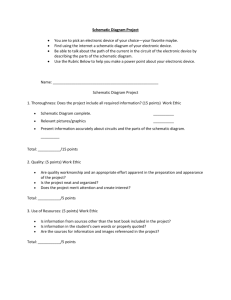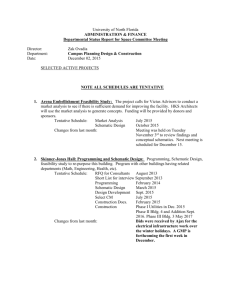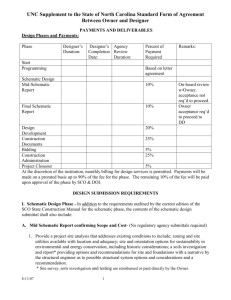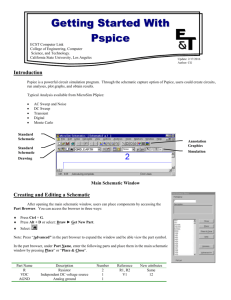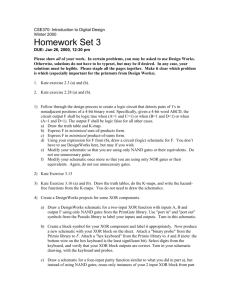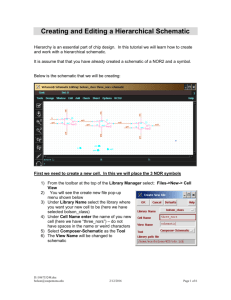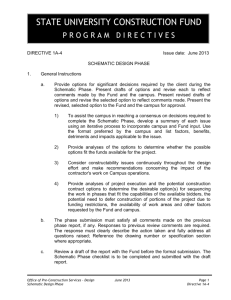Rough Order of Magnitude Estimate - The University of Texas at Austin
advertisement
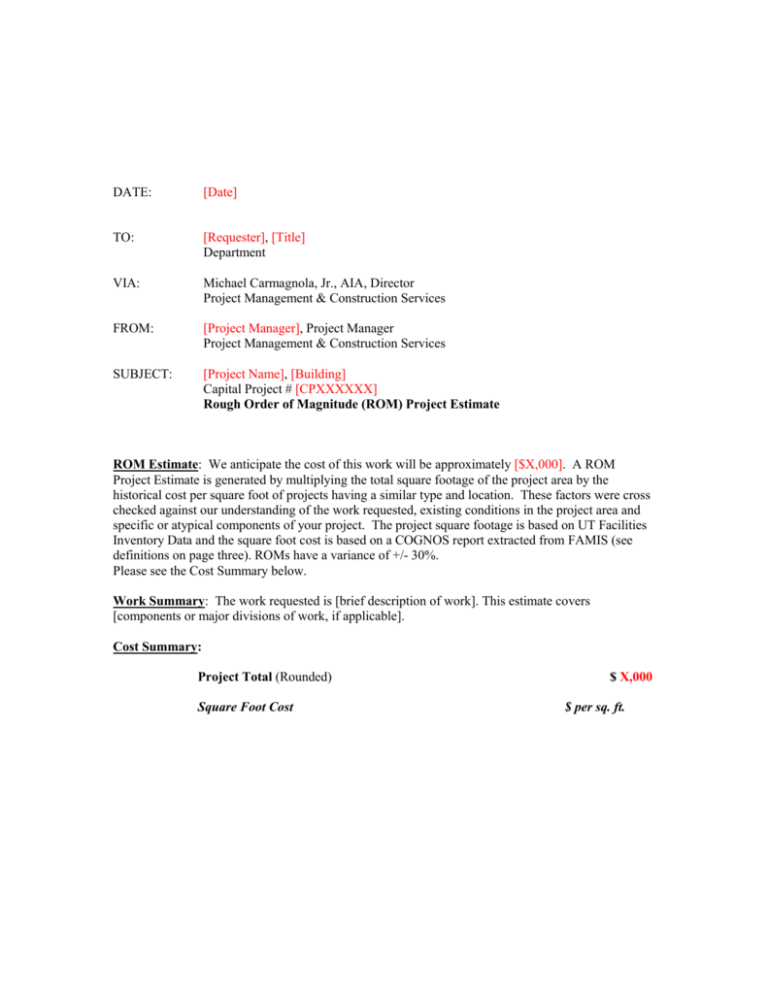
DATE: [Date] TO: [Requester], [Title] Department VIA: Michael Carmagnola, Jr., AIA, Director Project Management & Construction Services FROM: [Project Manager], Project Manager Project Management & Construction Services SUBJECT: [Project Name], [Building] Capital Project # [CPXXXXXX] Rough Order of Magnitude (ROM) Project Estimate ROM Estimate: We anticipate the cost of this work will be approximately [$X,000]. A ROM Project Estimate is generated by multiplying the total square footage of the project area by the historical cost per square foot of projects having a similar type and location. These factors were cross checked against our understanding of the work requested, existing conditions in the project area and specific or atypical components of your project. The project square footage is based on UT Facilities Inventory Data and the square foot cost is based on a COGNOS report extracted from FAMIS (see definitions on page three). ROMs have a variance of +/- 30%. Please see the Cost Summary below. Work Summary: The work requested is [brief description of work]. This estimate covers [components or major divisions of work, if applicable]. Cost Summary: Project Total (Rounded) Square Foot Cost $ X,000 $ per sq. ft. Standards: Proposed work will be built to current University of Texas Construction Standards that can be found at http://www.utexas.edu/campusplanning/dc/. Hazardous Materials: Asbestos and lead are commonly found in older construction. Environmental Health and Safety will test for the presence of these materials. Unforeseen Conditions: In renovation, there is always the possibility of unforeseen conditions that could affect project costs significantly. If this project goes forward, we will notify you of conditions that will affect the construction cost or schedule. Next Steps: Option One: Request a Detailed Estimate A detailed estimate is a client funded task authorizing the Project Manager to perform the following; produce a Scoping and Feasibility analysis, perform a thorough review of existing conditions and document those findings, prepare a Program and Design Schematic for the project and generate a Detailed Estimate based on the client approved Program and Schematic. The cost of a Detailed Estimate is $5,500. Option Two: Approve the Project Project approval authorizes Project Management & Construction Services (PMCS) to proceed with Scoping & Feasibility, Programming, Schematic Design, Design Development and produce Construction Documents. Approval of the Project requires a minimum funded amount of 30% of the ROM Project Estimate. Electing either option will require written authorization from your Vice President and an account number from which funding will be provided. Once approval is received we will begin work on your requested Option. Time Limit: This estimate is valid for three months from this date. If the project is not funded within this time period, the project will be canceled. If you wish to pursue the project at a future date, please notify PMCS, and we will reactivate the project and re-evaluate the costs providing a ROM based on updated historical data and current market conditions. Contact: If you have any questions concerning this estimate, scope of work, or associated procedures, please contact me by: Desk phone: Mobile phone: Email: Attachments: cc: Work Request (SR10) Location Map Daniel Sleznick, Vice Provost (College/Academic Estimates over $25k and College/Academic Estimates asking for Provost funding) Assistant/Associate Dean (academic projects) Director / Associate Director (non-academic projects) Vice President (non-academic projects) Jennifer Maedgen, Senior Associate Vice President (ADA projects) (Insert additional stakeholder cc’s as necessary) File – D. Financial Definitions: ROUGH ORDER of MAGNITUDE: COGNOS: FAMIS: FACILITIES INVENTORY DATA: HISTORICAL COST DATA: SCOPING AND FEASIBILITY: translate academic or department request/initiatives into potential facility needs and determine if a capital construction project is necessary. PROGRAM: written statement setting forth design objectives, constraints, and criteria for a project including space requirements and relationships, flexibility and expandability, special equipment and systems, and site requirements. Preliminary discussions with the designer to determine the client's functional needs, general aesthetic goals and projected budget. Programming does not include any design but rather serves as the problem seeking phase. Attention to this Phase will establish clear parameters and create a solid foundation for the following phases. SCHEMATIC DESIGN: develop a clearly defined design with a comprehensive scope, budget and schedule & Scope, schedule, budget and schematic design studies consisting of drawings and other documents illustrating the scale and relationship of the project components. At the end of the schematic design phase the designer will present some very rough sketches to the client for approval. These sketches will provide the client with the opportunity to verify that the designer has correctly interpreted the client's desired functional relationships between various activities. DESIGN DEVELOPMENT: refine the scope and further develop the approved schematic to work out a clear, coordinated description of all aspects of the project. At the end of the design development phase the designer will provide the client with drafted to-scale drawings that will illustrate the project as it would look when it's constructed. These drawings will very specifically define the site plan, floor plans and elevations. It is important that the client provide input to the designer at this time as the design development drawings are used as the basis for the construction drawings and preliminary cost estimates for the project. CONSTRUCTION DOCUMENTS: refine and further detail the approved design development documents to form a coordinated comprehensive set of documents used for building, bidding and permitting the project. Based on client-approved design development drawings, construction documents are prepared. When the construction documents are complete the project will have sufficient information to secure contractor bids. BIDDING: advertise project and solicit bids; select contractor(s). CONSTRUCTION: build/renovate facility, spaces and systems. COMMISSION, PUNCH, SUBSTANTIAL COMPLETION: test operation of all systems; measure against design. OCCUPANCY: move in furniture and occupants. CLOSE OUT: reconcile all contracts, payments and archive project documents, such as O&M manuals, as-builts, etc. WARRANTY PERIOD: one year (less one day) from substantial completion. Supporting Information: Please see the PMCS web site for additional documentation and information regarding construction projects @ the University of Texas.
